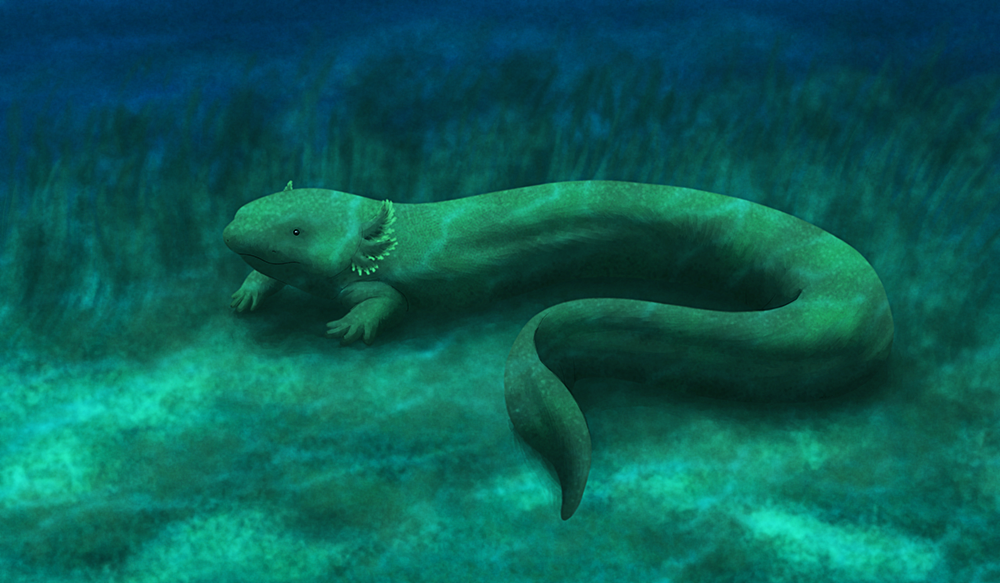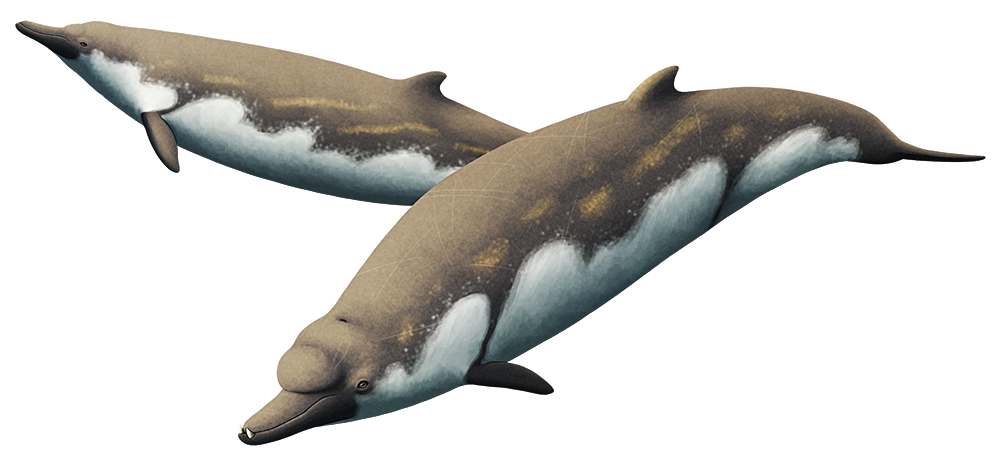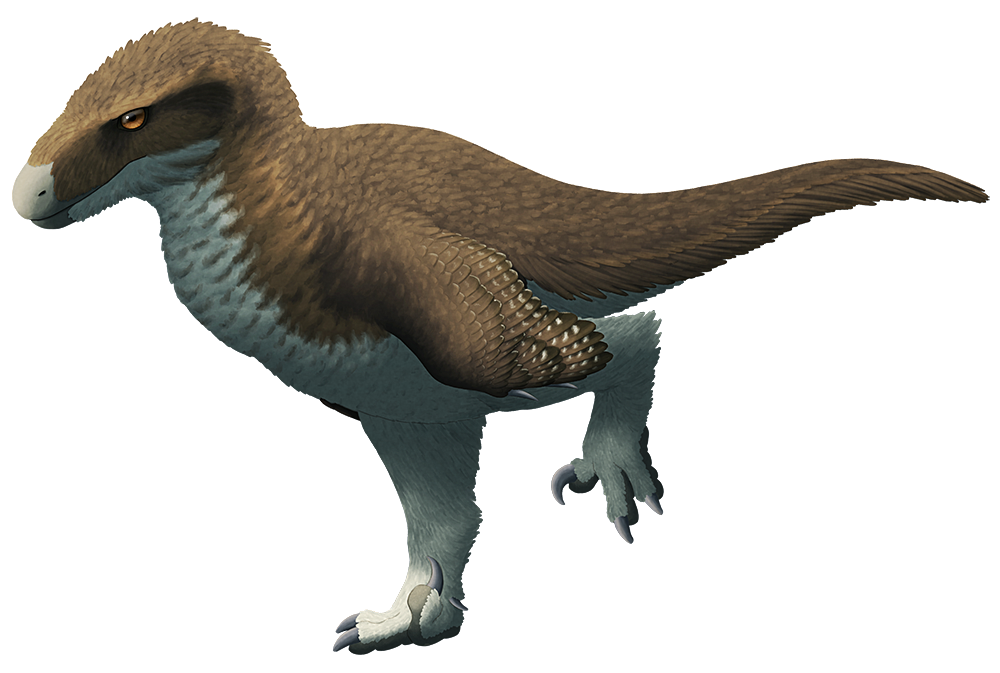Sirens are part of the salamander branch of the lissamphibians, and are some of the most unusual members of the group. They have an eel-like body shape, with small forelimbs and no hindlimbs at all, and have functional external gills as adults. Their main diet is carnivorous, with palatal teeth and a keratinous beak at the front of their jaws adapted for eating hard-shelled prey – but they’ve also been observed feeding on plant material, a rarity among amphibians.
Habrosaurus here was one of the earliest known sirens, living during the Late Cretaceous and Early Paleocene of North America (~84-58 mya). Reaching lengths of around 1.6m (5′3″), it was one of the largest known lissamphibians of all time, comparable in size to some modern giant salamanders.
It lacked the beak seen in its modern relatives, instead having specialized chisel-like teeth at the edges of its jaws that convergently served the same purpose of delivering a crushing bite.





